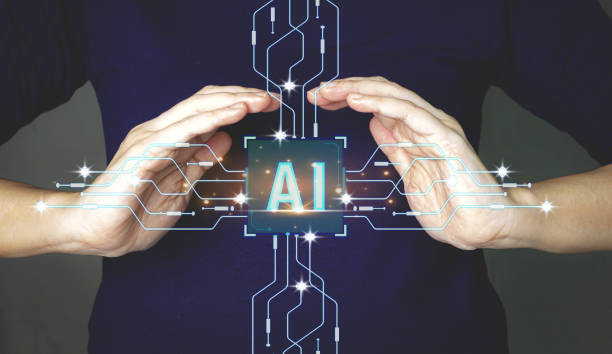What is Artificial Intelligence? Definition and Basic Concepts
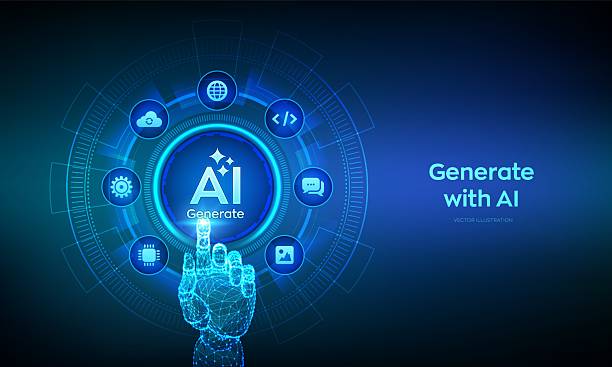
#Artificial_Intelligence (Artificial Intelligence or AI) is a branch of computer science that deals with building machines that are capable of performing tasks that usually require human intelligence.
These tasks include learning, reasoning, problem solving, natural language understanding, pattern recognition, and decision making.
In other words, the goal of artificial intelligence is to build systems that can think and act like humans.
Artificial intelligence is a broad field that includes various approaches and techniques.
Machine Learning is an important subfield of artificial intelligence that allows machines to learn from data without explicit programming.
Neural Networks are computational models that are inspired by the structure of the human brain and are used in many artificial intelligence applications, including image recognition and natural language processing.
Deep Learning is a type of machine learning that uses deep neural networks with multiple layers to analyze data.
The concept of artificial intelligence dates back decades, but recent advances in computing power and access to big data have made artificial intelligence a widely used and impactful technology in many industries.
From self-driving cars to virtual assistants and fraud detection systems, artificial intelligence is changing the way we live and work.
To better understand #Artificial_Intelligence, it is important to be familiar with its basic concepts and know how this technology can help solve problems and improve processes.
In the rest of this article, we will examine the various applications of artificial intelligence and its impact on various industries.
Did you know that 94% of users’ first impression of a business is related to its website design? With professional corporate website design by **Rasaweb**, turn this first impression into an opportunity for growth.
✅ Attract more customers and increase sales
✅ Create credibility and trust in the eyes of the audience⚡ Get a free website design consultation!
Types of Artificial Intelligence: Different Levels of Capability
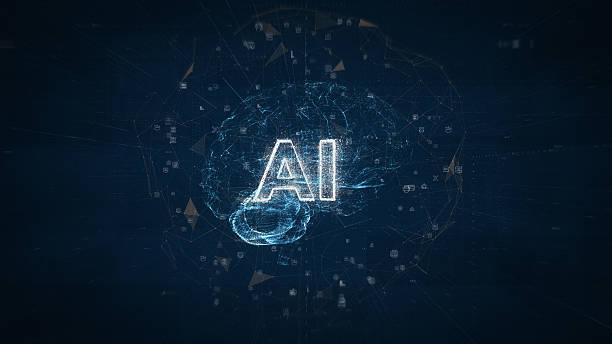
Artificial intelligence can be divided into different types based on their abilities.
One of the most common classifications is the classification based on the level of ability, which includes Narrow AI, General AI, and Super AI.
Narrow AI, sometimes referred to as weak AI, is designed to perform a specific task.
This type of artificial intelligence is currently the most common type of artificial intelligence and is used in many everyday applications, such as virtual assistants (such as Siri and Alexa), recommender systems (such as Netflix and Amazon), and low-level self-driving cars.
Narrow AI can be very efficient in performing specific tasks, but it does not have the ability to generalize to other tasks.
General AI, sometimes referred to as strong AI, has the ability to understand, learn, and perform any task that a human can do.
This type of artificial intelligence is still in the research and development stage and has not yet been fully realized.
Achieving general artificial intelligence is a major challenge that requires significant advances in various fields of artificial intelligence, including machine learning, reasoning, and natural language understanding.
Super AI is a hypothetical intelligence that surpasses human intelligence.
This type of artificial intelligence can solve complex problems and create innovations that are impossible for humans.
Super AI is still a theoretical concept, and there are concerns about its potential dangers.
Understanding these differences is essential for a better understanding of the possibilities and limitations of artificial intelligence.
Currently, most applications of #Artificial_Intelligence are based on narrow artificial intelligence, but research in the field of general and super artificial intelligence continues.
Applications of Artificial Intelligence in Various Industries

#Artificial_Intelligence is transforming various industries and has diverse applications in different fields.
The most important applications of artificial intelligence include:
Healthcare Artificial intelligence plays an important role in diagnosing diseases, developing new drugs, personalizing treatment, and improving patient care.
Artificial intelligence-based systems can analyze medical images and identify patterns that may be overlooked by doctors.
Also, artificial intelligence can help develop new drugs by predicting the effectiveness and side effects of drugs.
Finance Artificial intelligence is used in fraud detection, risk management, providing financial advice, and improving customer service in the financial industry.
Artificial intelligence-based systems can monitor financial transactions and identify suspicious patterns.
Also, artificial intelligence can help investors make investment decisions and provide personalized financial services.
Manufacturing Artificial intelligence is used in automating production lines, quality control, predicting equipment failure, and improving productivity in the manufacturing industry.
Robots equipped with artificial intelligence can perform repetitive and dangerous tasks.
Also, artificial intelligence can help manufacturers optimize production processes and reduce costs.
Retail Artificial intelligence is used in personalizing the shopping experience, managing inventory, predicting demand, and improving customer service in the retail industry.
Artificial intelligence-based systems can analyze customer behavior and suggest products and services that they are likely to be interested in.
Also, artificial intelligence can help retailers manage inventory and predict demand.
Transportation Artificial intelligence is used in the development of self-driving cars, optimizing routes, managing traffic, and improving safety in the transportation industry.
Self-driving cars can drive without human intervention.
Also, artificial intelligence can help transportation companies optimize routes and reduce costs.
These are just a few examples of the applications of artificial intelligence in various industries.
As technology advances, artificial intelligence is expected to have wider applications and a greater impact on our lives.
| Industry | Application of Artificial Intelligence |
|---|---|
| Healthcare | Disease diagnosis, drug development |
| Finance | Fraud detection, risk management |
| Manufacturing | Automation of production lines, quality control |
Advantages and Disadvantages of Artificial Intelligence
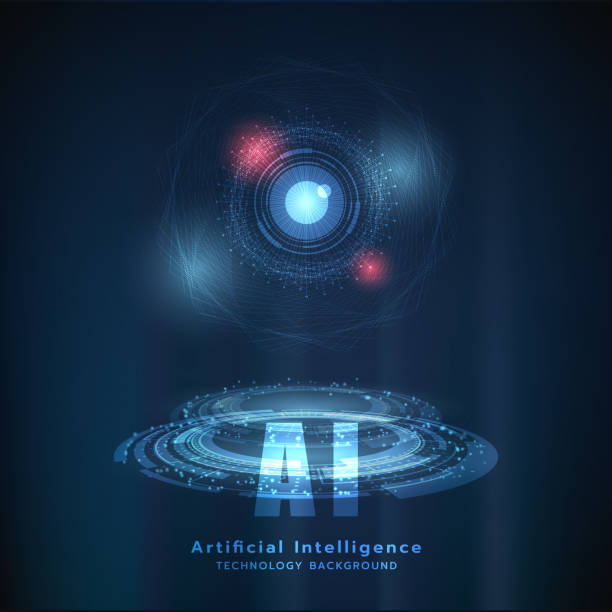
#Artificial_Intelligence, like any other technology, has advantages and disadvantages that must be considered.
Understanding these advantages and disadvantages is essential for making informed decisions about the use of artificial intelligence in various fields.
Advantages:
- Improved productivity: Artificial intelligence can perform tasks faster and more efficiently than humans, leading to improved productivity in various industries.
- Reduced errors: Artificial intelligence-based systems can reduce errors, especially in repetitive and complex tasks.
- Improved decision making: Artificial intelligence can help make more accurate and informed decisions by analyzing large data.
- Better service delivery: Artificial intelligence can help provide better and more personalized services to customers.
- Cost reduction: Artificial intelligence can reduce costs by automating tasks and improving processes.
Disadvantages:
- High cost: Developing and implementing artificial intelligence-based systems can be costly.
- Lack of expertise: The shortage of skilled experts in the field of artificial intelligence can be an obstacle to the development and implementation of this technology.
- Ethical concerns: Artificial intelligence can raise ethical concerns, including issues related to privacy, discrimination, and job loss.
- Data dependency: Artificial intelligence-based systems require large and high-quality data.
- Risk of abuse: Artificial intelligence can be used for malicious purposes, such as building automated weapons or spreading misinformation.
Given these advantages and disadvantages, it is necessary for artificial intelligence to be developed and used responsibly and with ethical considerations.
Also, attention should be paid to the education and training of skilled experts in this field so that the benefits of artificial intelligence can be fully realized.
Are you losing business opportunities due to an outdated website? With Rasaweb, solve the problem of not attracting potential customers through your website forever!
✅ Attract more high-quality leads
✅ Increase brand credibility in the eyes of customers
⚡ Get a free corporate website design consultation
The Future of Artificial Intelligence: Predictions and Possibilities
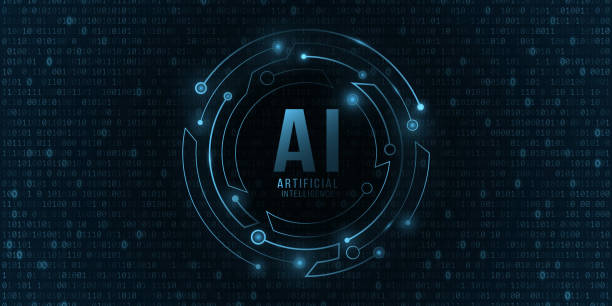
The future of #Artificial_Intelligence is full of exciting possibilities and predictions.
With the rapid advancement of technology, artificial intelligence is expected to play a much more important role in our lives in the future.
Some of the key predictions about the future of artificial intelligence include:
Expanded applications: Artificial intelligence is expected to expand its applications in various industries and cover new areas.
Artificial intelligence can play an important role in the future in areas such as education, agriculture, energy, and the environment.
Development of general artificial intelligence: Achieving general artificial intelligence (AGI) is an ambitious goal that could create huge transformations in the world.
General artificial intelligence can solve complex problems and create innovations that are impossible for humans.
Widespread automation: Artificial intelligence can automate many tasks, leading to increased productivity and reduced costs.
However, widespread automation can raise concerns about job losses.
Human-machine interaction: The interaction between humans and machines is expected to increase in the future.
Virtual assistants, robots, and other artificial intelligence-based systems can help humans perform various tasks.
Ethical challenges: As artificial intelligence advances, new ethical challenges also arise.
Issues such as privacy, discrimination, accountability, and control must be taken seriously.
To take advantage of the opportunities of artificial intelligence and deal with its challenges, it is necessary for policymakers, industrialists, researchers, and the general public to cooperate with each other.
Also, attention should be paid to the education and training of skilled experts in this field so that the benefits of artificial intelligence can be fully realized.
Machine Learning: A Subset of Artificial Intelligence
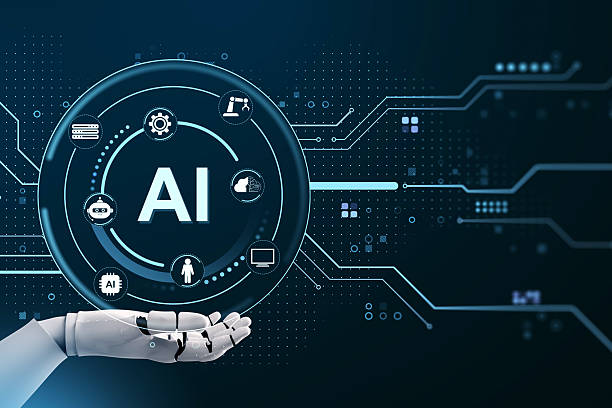
Machine Learning is an important and widely used subset of #Artificial_Intelligence.
In short, machine learning allows machines to learn from data and improve their performance without explicit programming.
This process involves using algorithms to analyze data, identify patterns, and predict results.
Machine learning can be divided into three main categories:
- Supervised Learning: In this type of learning, the machine is trained using labeled data.
Labeled data includes inputs and desired outputs.
The goal of the machine is to create a model that can predict the correct outputs for new inputs. - Unsupervised Learning: In this type of learning, the machine is trained using unlabeled data.
The goal of the machine is to identify hidden patterns and structures in the data. - Reinforcement Learning: In this type of learning, the machine is trained by interacting with an environment.
The machine takes different actions and receives feedback that indicates whether its actions were successful or not.
The goal of the machine is to learn a policy that allows it to receive the maximum reward.
Machine learning is used in many artificial intelligence applications, including image recognition, natural language processing, recommender systems, and self-driving cars.
This technology is rapidly advancing and is expected to play a much more important role in our lives in the future.
Neural Networks: Inspired by the Human Brain

Neural Networks are computational models that are inspired by the structure of the human brain.
These networks consist of interconnected nodes (neurons) that process and transmit information.
Neural networks can learn complex patterns in data and can be used to perform various tasks, including image recognition, natural language processing, and prediction.
A neural network typically consists of three main layers:
- Input Layer: This layer receives information from the outside world.
- Hidden Layers: These layers process information and identify patterns.
A neural network can have multiple hidden layers. - Output Layer: This layer presents the results of processing.
Each neuron in the neural network receives an input, processes it, and produces an output.
The output of each neuron is used as input for other neurons in the network.
The weights of the connection between neurons determine how much each neuron affects the other neurons.
Neural networks are trained by adjusting the weights of the connection between neurons so that they can learn complex patterns in data.
Neural networks are used in many artificial intelligence applications, including image recognition, natural language processing, recommender systems, and self-driving cars.
This technology is rapidly advancing and is expected to play a much more important role in our lives in the future.
TensorFlow and PyTorch are two popular frameworks for developing neural networks.
| Layer | Description |
|---|---|
| Input Layer | Receiving information from the outside world |
| Hidden Layers | Processing information and identifying patterns |
| Output Layer | Presenting the results of processing |
Deep Learning: Multiple Layers for Data Analysis

Deep Learning is a type of machine learning that uses deep neural networks with multiple layers to analyze data.
These layers allow the machine to learn more complex and abstract patterns in the data.
Deep learning has become a very successful technology in recent years due to significant advances in computing power and access to large data.
Deep neural networks typically consist of many layers, with each layer responsible for extracting specific features from the data.
For example, in a deep neural network for image recognition, the initial layers may be responsible for detecting edges and corners, while the later layers may be responsible for detecting more complex objects such as faces and cars.
Deep learning is used in many applications of #Artificial_Intelligence, including image recognition, natural language processing, recommender systems, and self-driving cars.
This technology is rapidly advancing and is expected to play a much more important role in our lives in the future.
Many research articles have been published in this field.
Are you losing potential customers because of an unprofessional website? Rasaweb is your answer! With our specialized corporate website design services:
✅ Enhance the credibility and position of your business
✅ Experience attracting more targeted customers
⚡ Apply for a free consultation now!
Challenges of Implementing Artificial Intelligence

The implementation of #Artificial_Intelligence is associated with several challenges.
These challenges can be technical, economic, ethical, and social.
Understanding these challenges is essential for success in implementing artificial intelligence.
Technical Challenges:
- Data scarcity: Artificial intelligence-based systems require large and high-quality data.
Collecting and preparing this data can be difficult and expensive. - Algorithm complexity: Artificial intelligence algorithms can be very complex and require deep expertise and knowledge.
- Computing power: Training deep neural networks requires a lot of computing power.
Economic Challenges:
- High cost: Developing and implementing artificial intelligence-based systems can be expensive.
- Return on investment: Determining the return on investment (ROI) for artificial intelligence projects can be difficult.
- Lack of expertise: The shortage of skilled experts in the field of artificial intelligence can increase costs.
Ethical Challenges:
- Privacy: Artificial intelligence-based systems can collect and process a lot of personal information.
Maintaining the privacy of this information is an important challenge. - Discrimination: Artificial intelligence algorithms can be discriminatory if they are trained with discriminatory data.
- Accountability: Determining accountability in the event of an error by artificial intelligence-based systems is an important challenge.
Social Challenges:
- Job loss: Widespread automation can raise concerns about job losses.
- Resistance to change: Some people may resist changes caused by artificial intelligence.
To address these challenges, it is necessary for organizations to have a comprehensive artificial intelligence strategy that includes planning, resource allocation, training, and considering ethical considerations.
Also, cooperation between industry, academia, and government can help the successful development and implementation of #Artificial_Intelligence.
Will Artificial Intelligence Replace Humans?
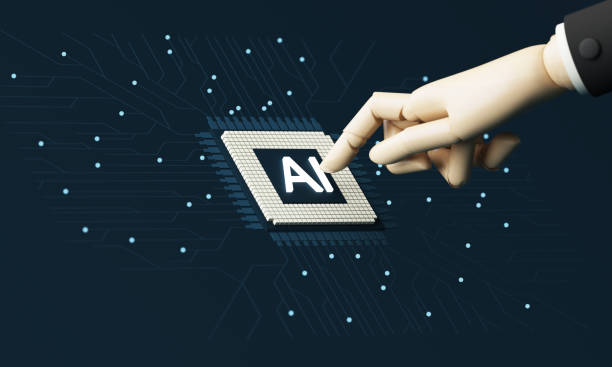
The question of whether #Artificial_Intelligence will replace humans is one of the most frequently asked and discussed questions in the world today.
The answer to this question is complex and depends on various factors.
Currently, artificial intelligence is very efficient in performing specific tasks and can automate many repetitive and tedious tasks.
This can lead to increased productivity and reduced costs.
However, artificial intelligence still lacks many of the abilities of humans, including creativity, empathy, critical thinking, and emotional intelligence.
Many experts believe that artificial intelligence is more likely to complement humans than to replace them.
In this scenario, humans and machines work together to perform tasks more efficiently and effectively.
For example, artificial intelligence can help doctors diagnose diseases, while doctors can use their experience and judgment to make better treatment decisions.
However, it is possible that in the future, artificial intelligence will advance to the point where it can completely automate many of the tasks that are currently performed by humans.
This could lead to job losses in some industries.
To address this challenge, it is necessary for governments and organizations to provide educational and support programs to help workers learn new skills and adapt to changes in the labor market.
Ultimately, the future of the relationship between humans and artificial intelligence depends on how this technology is developed and used.
If artificial intelligence is developed and used responsibly and with ethical considerations, it can help improve human lives and solve global problems.
Frequently Asked Questions
| Question | Answer |
|---|---|
| What is artificial intelligence? | It is a simulation of human intelligence in machines programmed to think like humans and mimic their actions. |
| What are the main branches of artificial intelligence? | They include machine learning, deep learning, natural language processing, computer vision, and robotics. |
| What is Machine Learning (Machine Learning)? | It is a branch of artificial intelligence that focuses on enabling systems to learn from data and identify patterns without explicit programming. |
| Give examples of artificial intelligence applications in our daily lives. | Voice assistants (such as Siri and Alexa), recommendation systems in Netflix and Amazon, self-driving cars, and facial recognition software. |
| What is Deep Learning? | It is a subset of machine learning that uses multi-layered (deep) artificial neural networks to process large amounts of data. |
| What is Natural Language Processing (NLP)? | It is a branch of artificial intelligence that focuses on enabling computers to understand, interpret, and generate human language. |
| What are some of the ethical concerns related to artificial intelligence? | These include bias in data, privacy, job loss, and liability in the event of errors. |
| What are the main benefits of artificial intelligence? | Increased efficiency, improved decision-making, automation of repetitive tasks, and discovery of complex patterns in data. |
| How is artificial intelligence used in the healthcare field? | In diagnosing diseases, discovering drugs, analyzing medical images, and personal care for patients. |
| How do you see the future of artificial intelligence? | It is expected to continue to evolve at a rapid pace, affecting all aspects of human life, from industry to education and entertainment. |
And other services of Rasa Web Advertising Agency in the field of advertising
Smart digital advertising: A new service to increase website visits through the use of real data.
Intelligent marketing automation: A new service to increase digital branding through a SEO-based content strategy.
Smart Google Ads: A dedicated service to grow website visits based on the use of real data.
Smart customer journey map: An effective tool to improve SEO ranking with the help of a SEO-based content strategy.
Smart content strategy: A dedicated service to grow customer acquisition based on optimizing key pages.
And more than hundreds of other services in the field of internet advertising, advertising consulting, and organizational solutions
Internet advertising | Advertising strategy | Advertorials
Sources
What is Artificial Intelligence? – Virgool
,Introductory Artificial Intelligence Training Course – Faradars
,What is Artificial Intelligence? The A to Z of AI in Simple Language – Maktab Khooneh
,What is Artificial Intelligence? Everything You Need to Know About AI – Zoomit
? Rasa Web Digital Marketing Agency is at your service, accompanying you on the fast-paced path of your business growth with professional services such as corporate website design and SEO optimization.
📍 Tehran, Mirdamad Street, next to the Central Bank, South Kazerun Alley, Ramin Alley, No. 6

